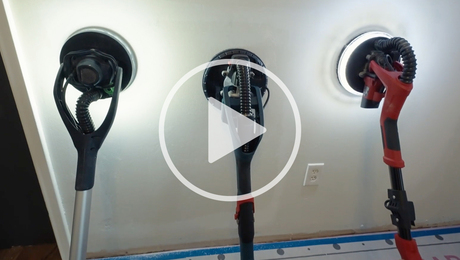Hi.
I was wondering what everyone’s thoughts are having a vapour barrier used on the inside of a house when there is 1/2 inch exterior foam board on the outside of a house. In a cold climate zone.
Discussion Forum
Discussion Forum
Up Next
Video Shorts
Featured Story

A pro painter evaluates a variety of drywall sanders and dust collection systems for quality of finish, user fatigue, and more.
Featured Video
How to Install Cable Rail Around Wood-Post CornersHighlights
Fine Homebuilding Magazine
- Home Group
- Antique Trader
- Arts & Crafts Homes
- Bank Note Reporter
- Cabin Life
- Cuisine at Home
- Fine Gardening
- Fine Woodworking
- Green Building Advisor
- Garden Gate
- Horticulture
- Keep Craft Alive
- Log Home Living
- Military Trader/Vehicles
- Numismatic News
- Numismaster
- Old Cars Weekly
- Old House Journal
- Period Homes
- Popular Woodworking
- Script
- ShopNotes
- Sports Collectors Digest
- Threads
- Timber Home Living
- Traditional Building
- Woodsmith
- World Coin News
- Writer's Digest


















Replies
The use of a vapor barrier in combination with exterior foam board insulation in a cold climate zone is a topic of debate among building professionals. Here are a few different perspectives and considerations to keep in mind:
Double vapor barrier: The exterior foam board acts as a vapor barrier itself due to its low permeability. Adding an interior vapor barrier in this scenario could potentially create a double vapor barrier system, which may hinder the moisture's ability to escape from the wall assembly. This could lead to moisture accumulation and potential moisture-related issues within the wall.
Climate and air circulation: The necessity of a vapor barrier depends on the specific climate and moisture conditions in your area. Cold climates generally experience more significant vapor drive from the interior to the exterior during heating seasons. However, with exterior foam board insulation, the insulation layer itself can reduce the temperature difference across the wall assembly, minimizing the risk of moisture condensation. Additionally, proper air circulation and ventilation within the wall assembly can help manage moisture effectively.
Building code and local regulations: It's essential to consult local building codes and regulations regarding vapor barrier requirements. These codes may provide specific guidelines on when and where vapor barriers are necessary, considering regional climate conditions and building practices.
Don’t to it with plastic use a smart semi permeable membrane like intelligent. Take Brian politanos wall build class